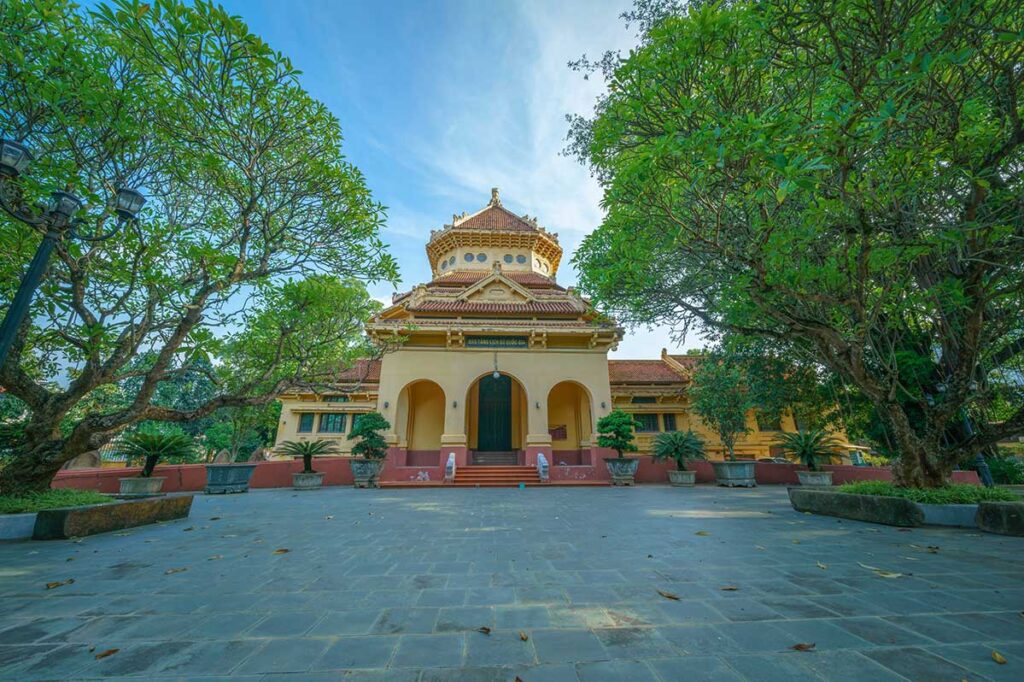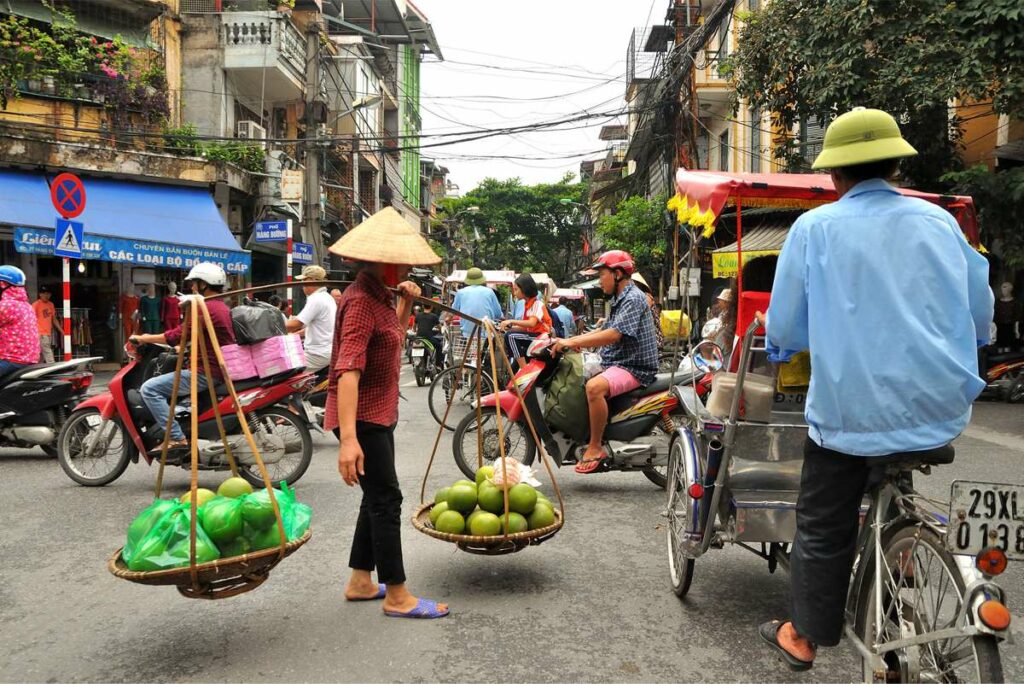Background & Layout
History of the Museum
The Vietnam National Museum of History traces its origins to the Louis Finot Museum, founded in 1932 by the École Française d’Extrême-Orient (EFEO) during the French colonial era. Originally dedicated to Eastern arts and archaeology, the museum building was taken over by the Vietnamese government in 1958 and converted into a museum of national history. In 2011, it merged with the Museum of the Vietnamese Revolution to become the unified Vietnam National Museum of History.
Architecture & Buildings
The main building at No. 1 Trang Tien Street is a standout example of Indochinese architecture, a blend of traditional Vietnamese and French colonial design. Designed by French architect Ernest Hébrard in the 1920s, the building features yellow walls, green shutters, and a pagoda-style roof — combining European structural techniques with Asian aesthetics.
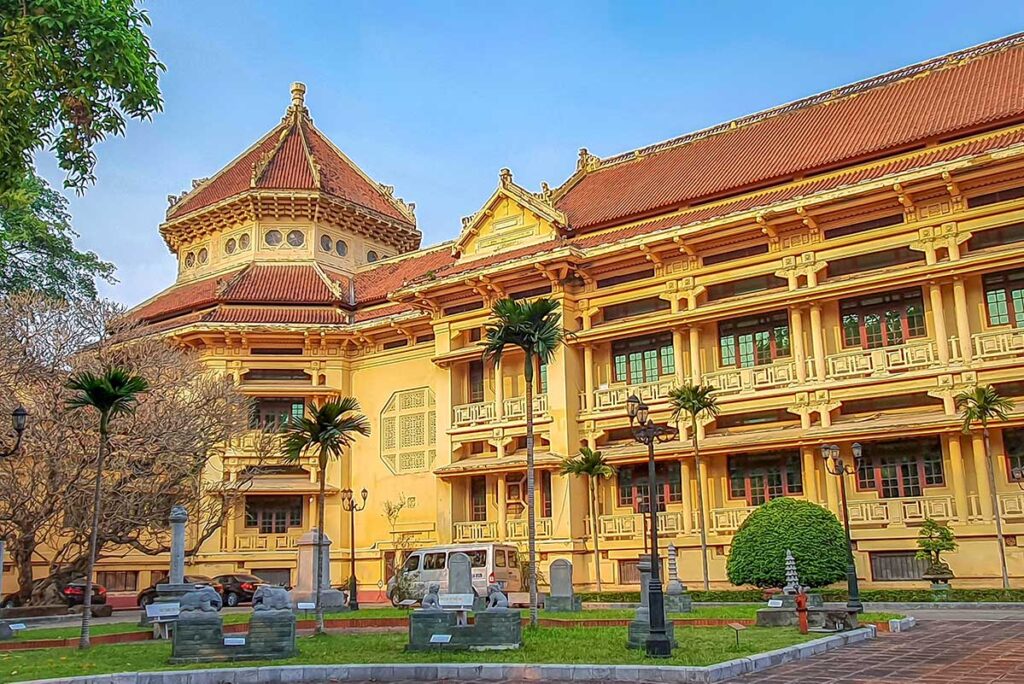
Inside, the octagonal central hall leads to a series of interconnected exhibition rooms, creating a flowing layout that guides visitors through time. The second location, at 216 Tran Quang Khai Street, has a more institutional feel but still carries colonial-era character. Together, the two buildings form a walkable museum complex just behind the Hanoi Opera House.
What to expect Inside
The museum offers a chronological journey through Vietnamese history, from prehistoric tools and bronze drums to wartime propaganda and Ho Chi Minh’s personal gifts. The Trang Tien building focuses on ancient history through the end of the Nguyen Dynasty in 1945, while the Tran Quang Khai building covers colonial resistance, the Vietnam War, and the post-war period.
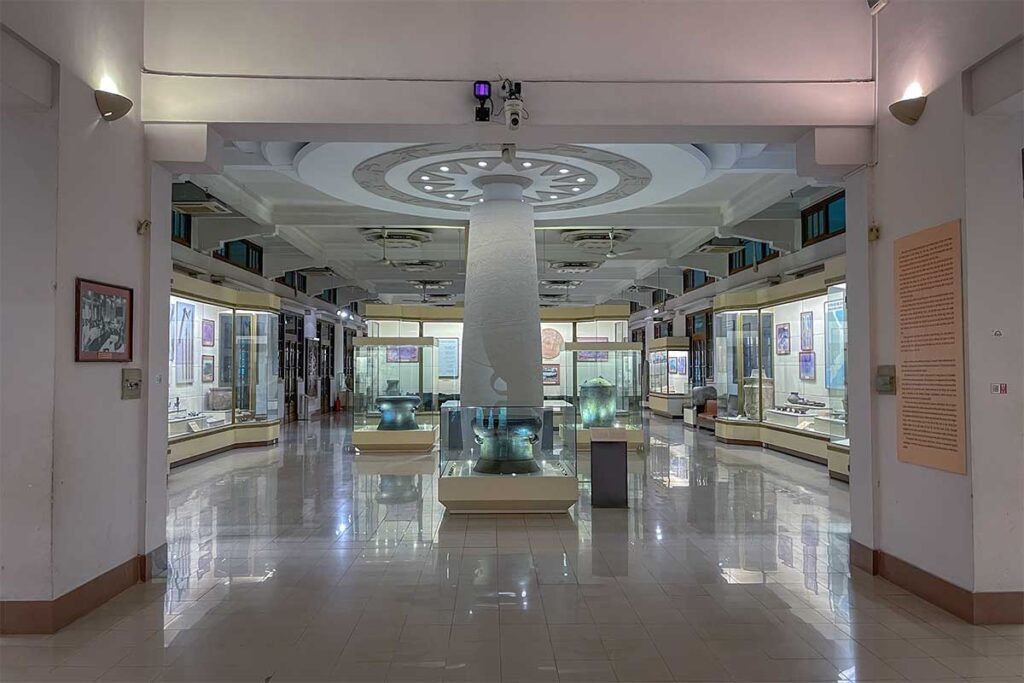
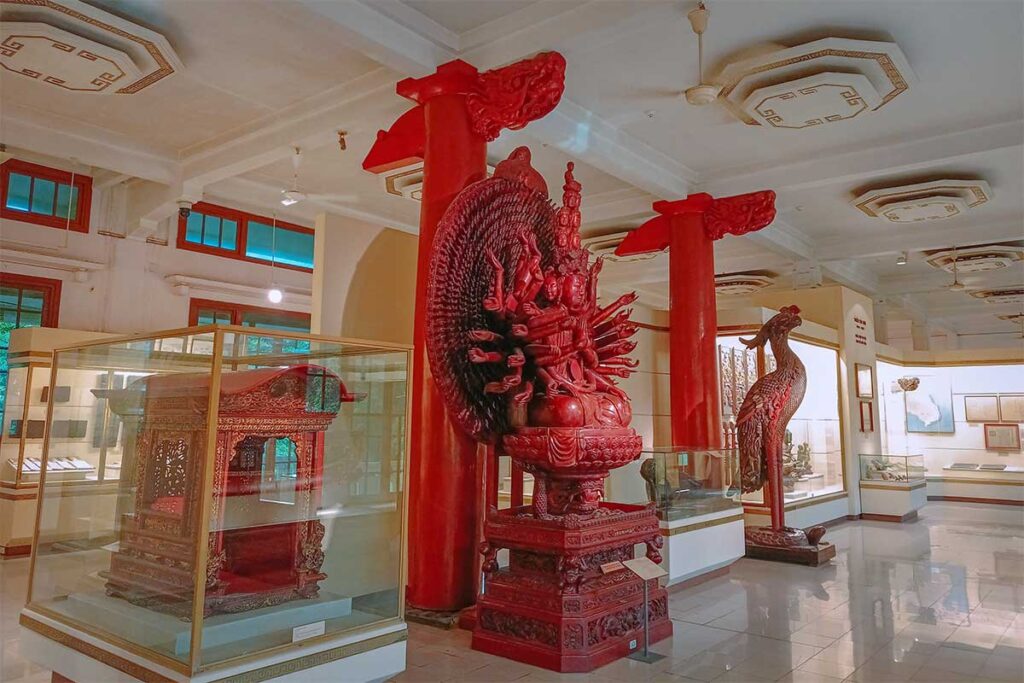
Expect a quiet, spacious environment with a large collection of artifacts, some clearly labeled in English, though not all. The exhibits are rich in content, but the overall presentation is traditional — more informative than immersive.
Highlights of Vietnam National Museum of History
1. Prehistoric Vietnam & Early Civilizations
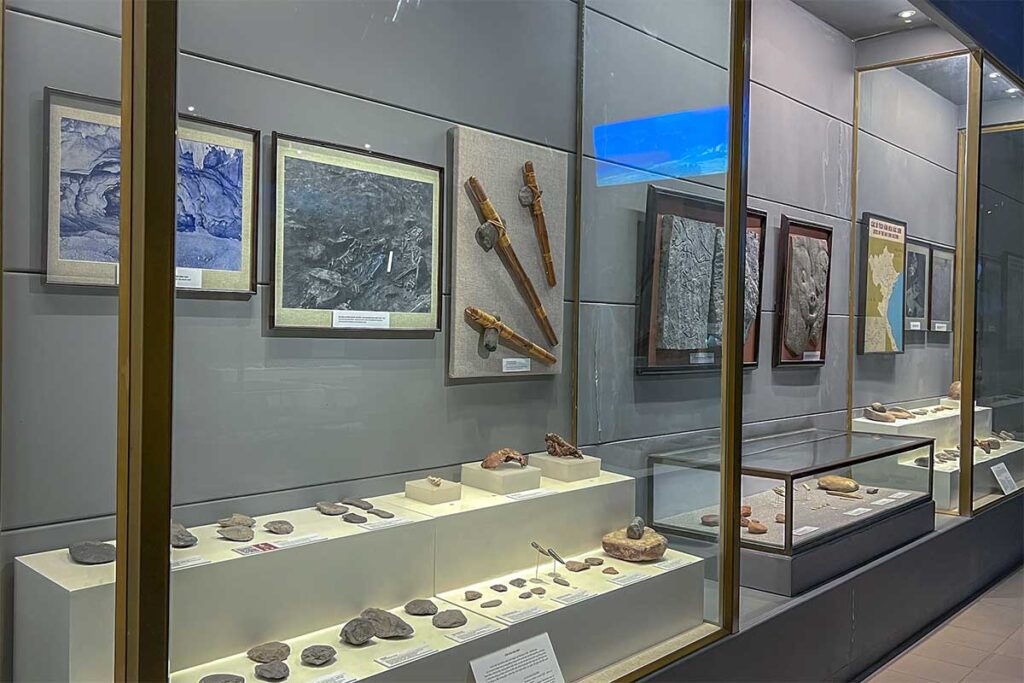
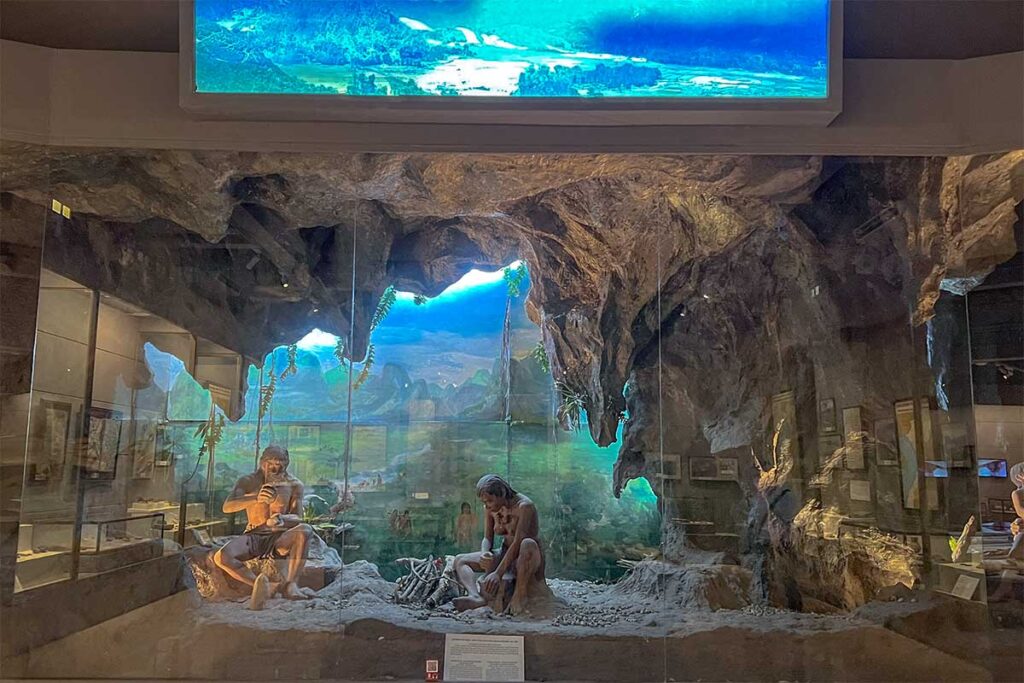
This section includes some of the oldest objects found in Vietnam, from stone tools and pottery to early human fossils. One of the most iconic items is the Dong Son bronze drum, a symbol of ancient Vietnamese civilization known for its intricate carvings. While the items themselves are impressive, this part of the museum leans heavily on archaeological context — best appreciated if you already have some interest in early Southeast Asian history.
2. Oc Eo, Sa Huynh & Champa Cultures
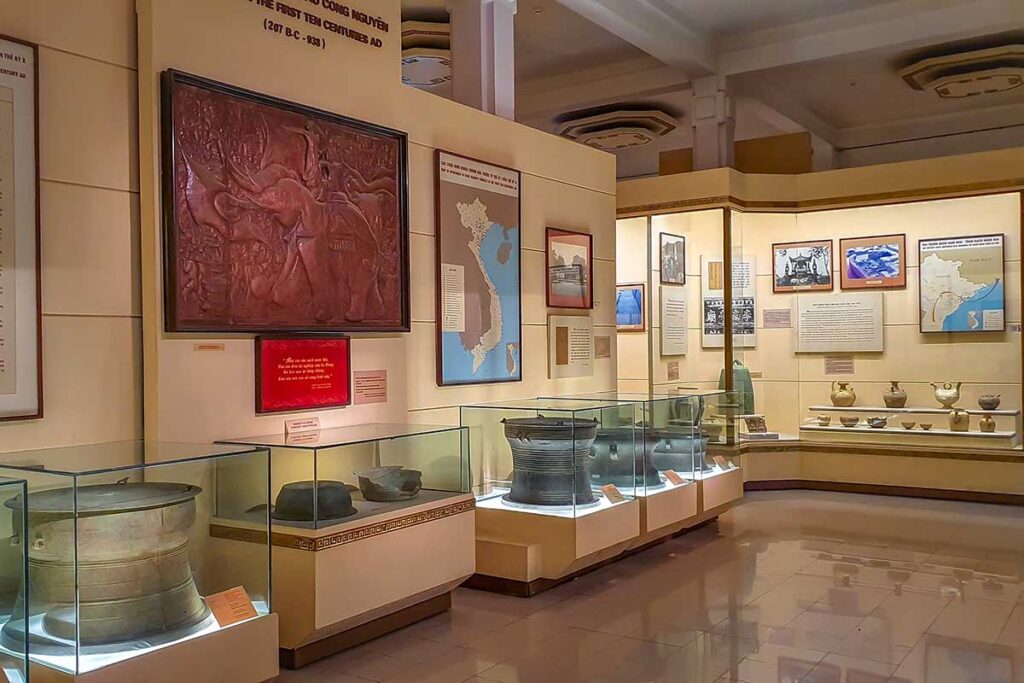
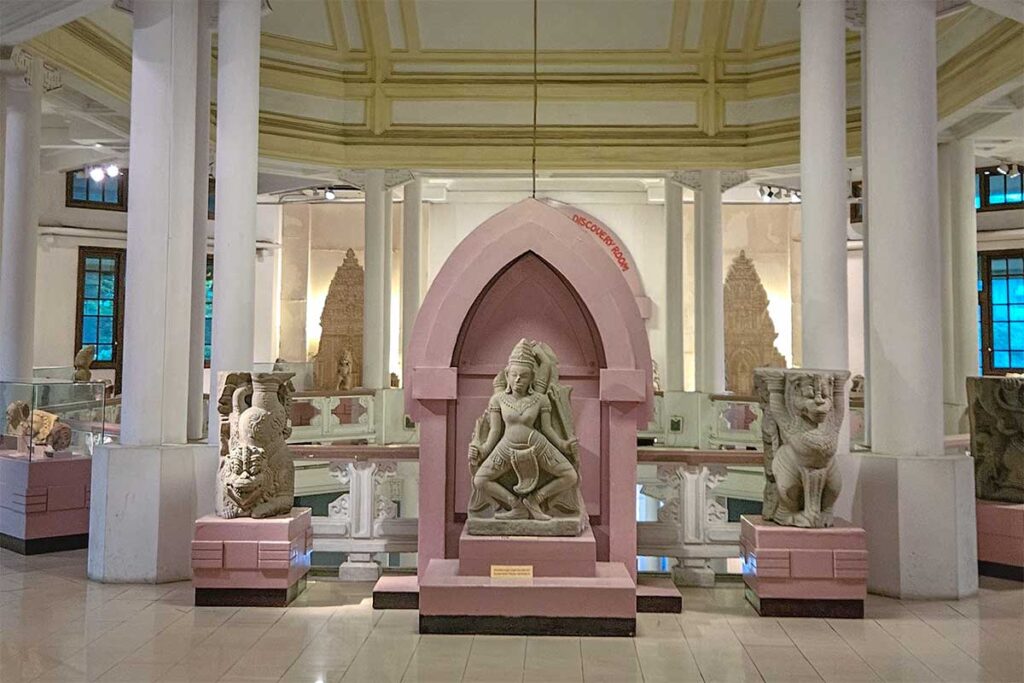
The museum holds several beautifully preserved Champa sculptures, along with relics from the Oc Eo and Sa Huynh cultures, which flourished in central and southern Vietnam. Many of these artifacts reflect the Hindu and Buddhist influences that shaped early Vietnamese kingdoms, including stone carvings of deities and trade items linked to ancient maritime networks. It’s one of the more visually striking areas in the museum.
3. Vietnamese Dynasties
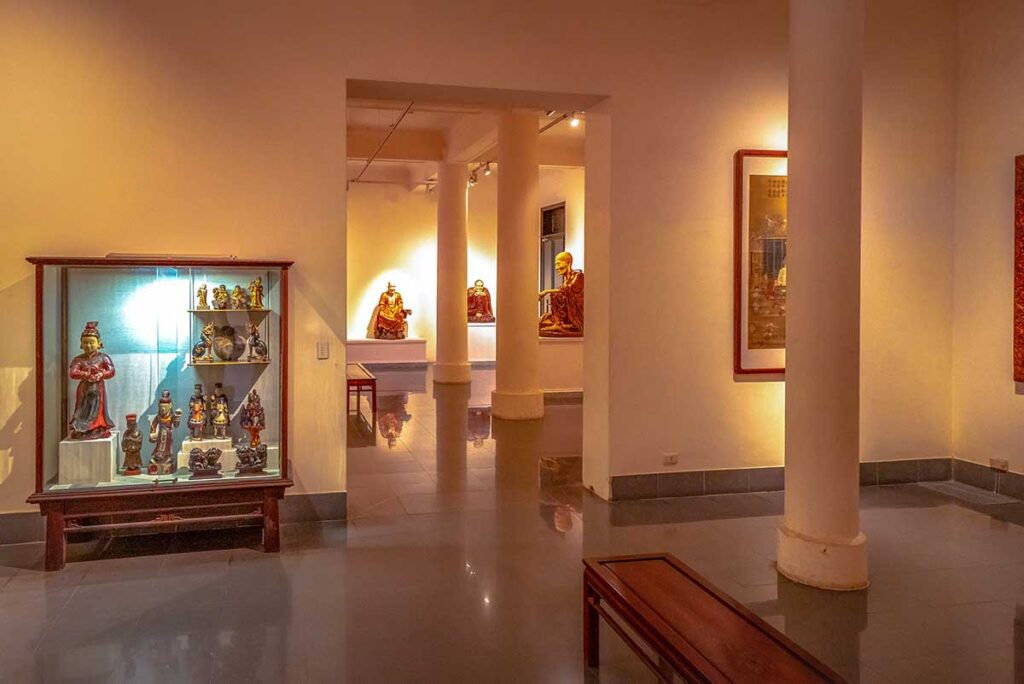
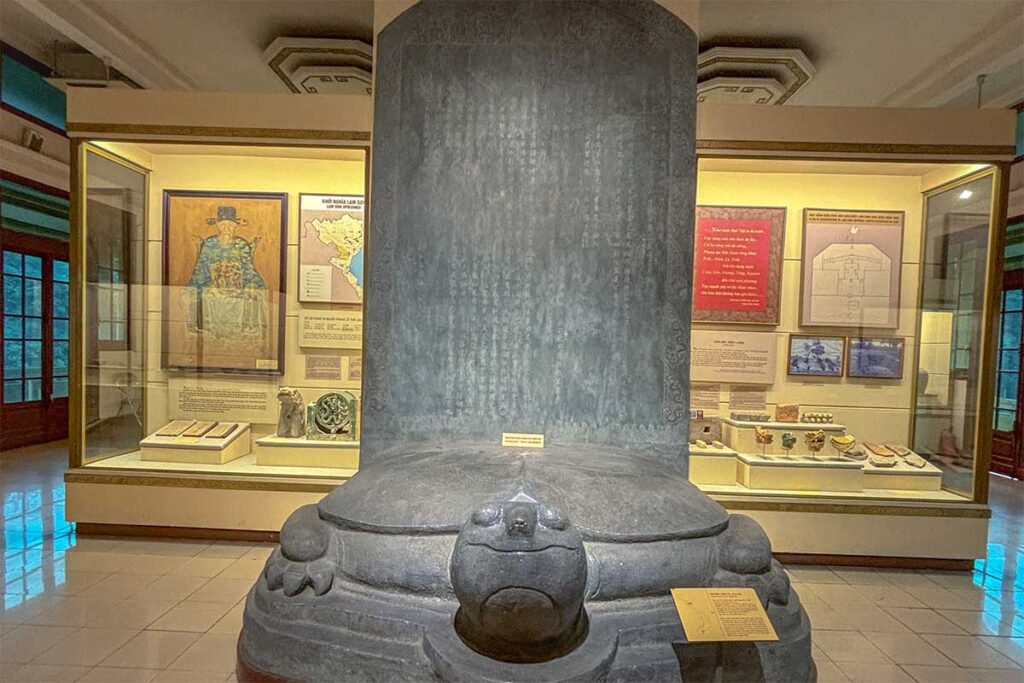
This section features objects from Vietnam’s imperial past, especially the Nguyen dynasty, the country’s last royal family. You’ll find ornate imperial robes, thrones, and delicate mother-of-pearl inlay furniture, along with lacquerware and ceramics. The craftsmanship is exquisite, though the display style remains quite traditional. If you enjoy material culture and decorative arts, this is a highlight.
4. Colonial Era & Resistance (1858–1945)
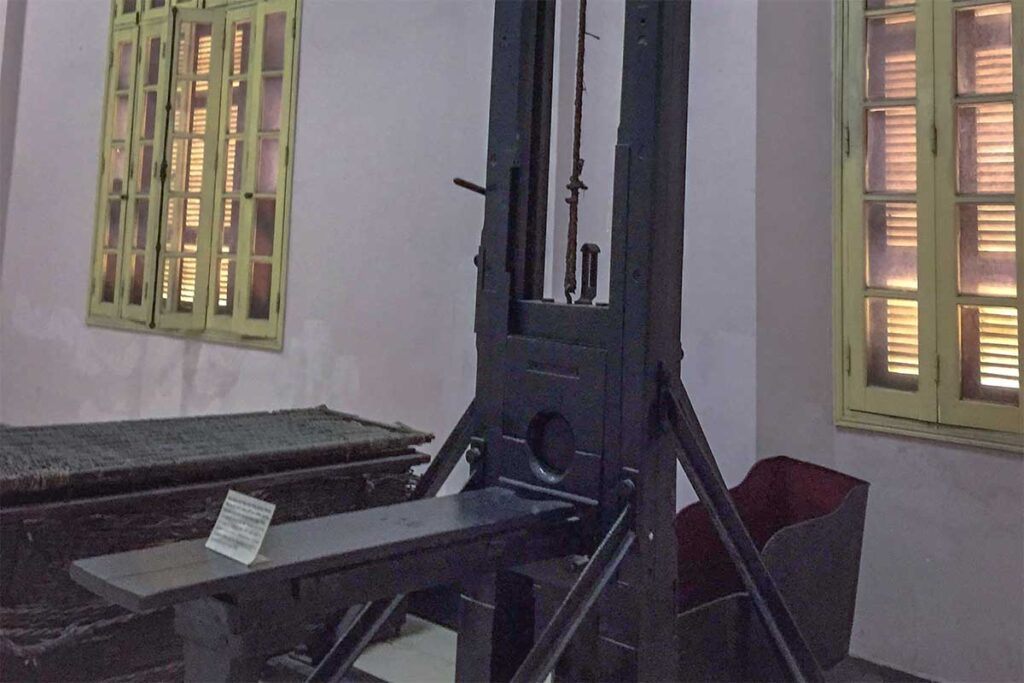
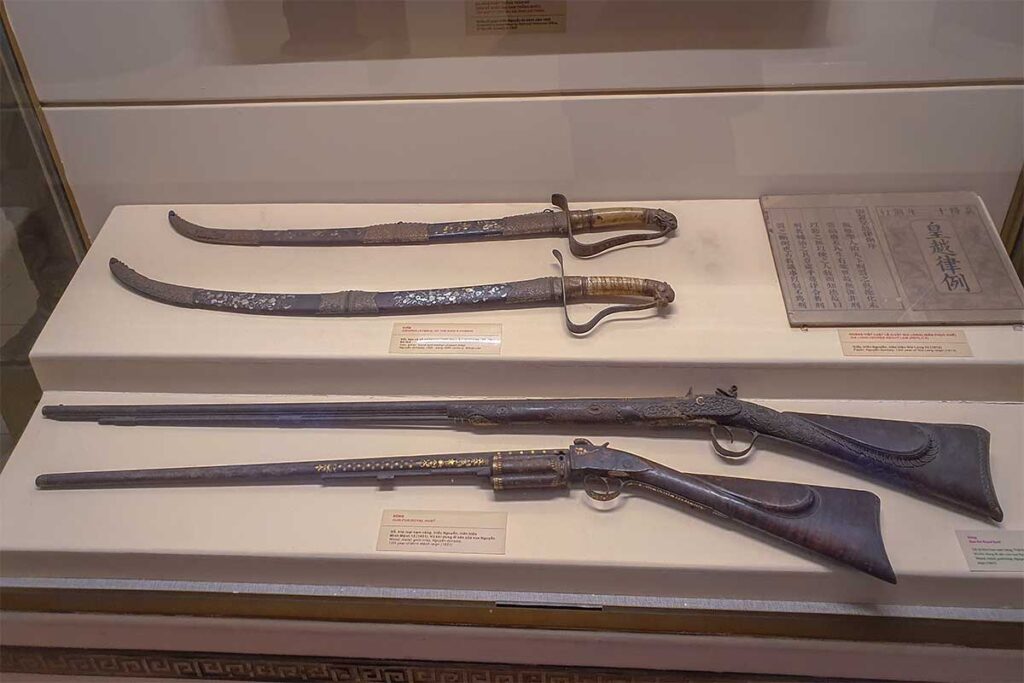
The colonial period is presented through a mix of photographs, documents, and disturbing objects like a real French guillotine used during the occupation. Exhibits cover the rise of resistance movements, including the formation of the Vietnamese Communist Party. This section feels heavier in tone, with a clear narrative of oppression and patriotism, but still provides valuable historical context.
5. Wars of Independence (1946–1975)
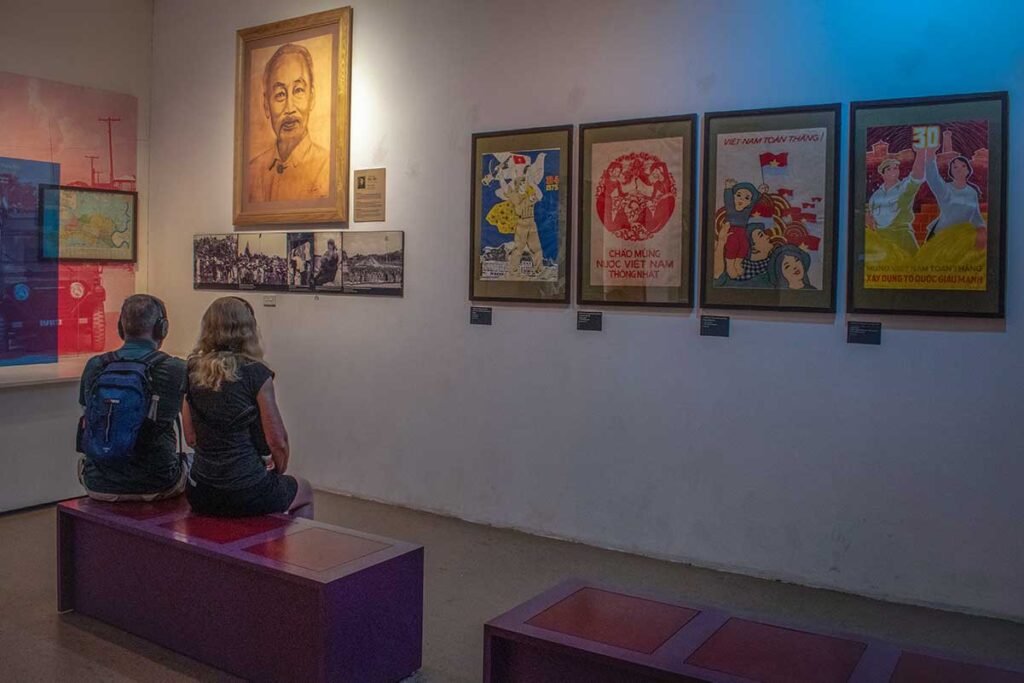
From the First Indochina War against the French to the Vietnam War against the Americans, this section traces 30 years of military struggle and sacrifice. It includes wartime tools, propaganda posters, and detailed coverage of major battles like Dien Bien Phu and the Ho Chi Minh Campaign. While not as interactive as some modern war museums, it gives a good overview of Vietnam’s 20th-century conflicts.
6. Post-War Era & Modern Vietnam
Covering the years after 1975, this section is smaller but offers insights into Vietnam’s reunification, socialist reforms, and evolving global relationships. One highlight is the collection of gifts presented to Ho Chi Minh and the Communist Party, including rare international memorabilia. It’s a more subdued part of the museum but rounds out the timeline well.
7. Outdoor Exhibits
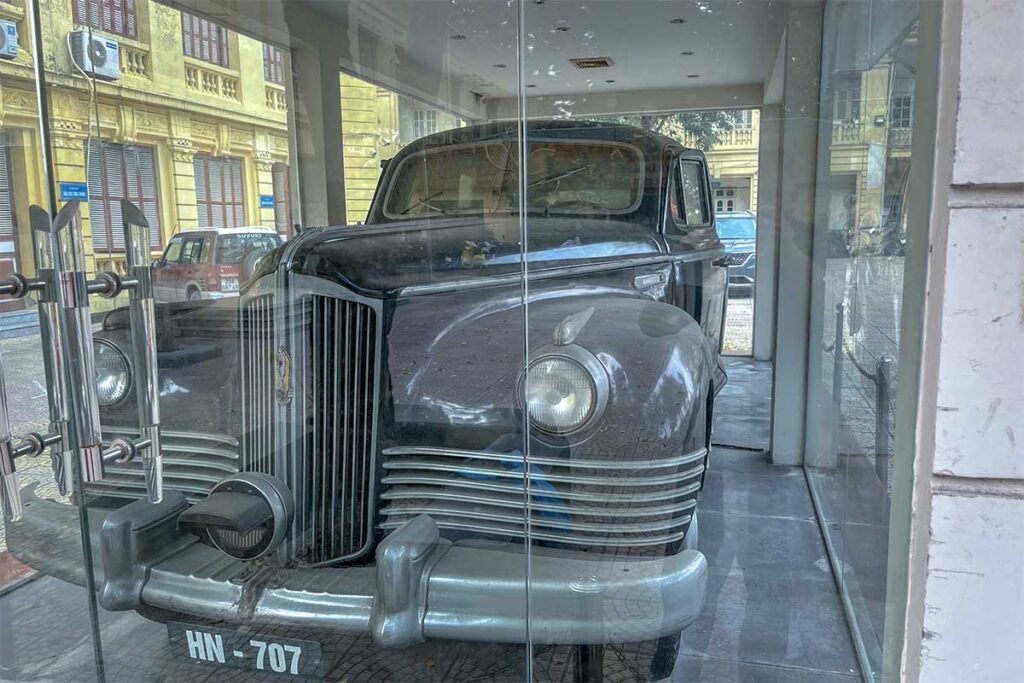
Scattered around the museum grounds are a few large objects, such as a 1950s Soviet car used by the Vietnamese government, large stone inscriptions, and Champa-style worship towers. These are easy to overlook, but they’re worth a quick look if you have extra time after exploring the main halls.
Visiting information
Opening Times
The Vietnam National Museum of History is open daily, except on Mondays.
- Morning: 8:00 AM – 12:00 PM
- Afternoon: 1:30 PM – 5:00 PM
There’s a break between noon and 1:30 PM, so plan accordingly if you want to visit both buildings in one trip.
Ticket Prices
- Adults: 40,000 VND
- Children under 6 and people with disabilities: Free
- Camera fee: 15,000 VND
- Filming fee: 30,000 VND
Facilities & Accessibility
There are basic facilities including restrooms, lockers, and a staffed information desk. You can request a guided tour in Vietnamese, English, or French, or use the free audio guide via your phone (Wi-Fi is available on site). Accessibility is somewhat limited—there are stairs and uneven floors, especially in the older building.
Time Needed
If you’re just skimming, you can cover one building in about 1.5 hours. To explore both buildings properly and read through the displays, expect to spend 3 to 4 hours. History enthusiasts may want even more time, especially in the ancient and wartime sections.
How to get there
Both buildings are located in central Hanoi, just behind the Hanoi Opera House.
- Walking: From most areas in the Old Quarter, it’s about 1 to 2 km. A scenic route is to walk along Hoan Kiem Lake, then past the Opera House and into Trang Tien Street.
- Grab/taxi: Convenient and inexpensive from anywhere in the city.
- Public transport: Buses 02, 34, 44, 49, 51, or electric bus E07 all stop near the Opera House.
- City tour bus: The hop-on-hop-off bus also has a nearby stop if you’re using it for sightseeing.
Nearby attractions
The museum is in a great location if you want to combine it with other Hanoi sights:
- Hanoi Opera House – Right next door, a colonial-era landmark.
- French Quarter – Wide boulevards, cafés, and historic government buildings.
- Hoan Kiem Lake – A short walk away, perfect for a relaxed stroll or a lakeside coffee after your visit.
Is it worth visiting?
If you’re interested in Vietnamese history or want a broad overview of the country’s past, the Vietnam National Museum of History is definitely worth a visit. The collection is large, the setting is quiet, and the buildings themselves are part of the appeal. It’s one of the few places in Hanoi where you can trace Vietnam’s story from prehistoric times through ancient kingdoms to modern-day reunification — all in one place.
That said, the museum is more traditional than modern. The presentation is mostly static — glass cases, labels, and dated signage in some sections. If you’re looking for interactive exhibits, multimedia storytelling, or a highly immersive experience, this might not be the right fit.
Compared to other museums in Hanoi, this one is less focused on presentation but strong in scope. The Vietnam Museum of Ethnology offers a more modern layout and insight into ethnic cultures. The Women’s Museum and Hoa Lo Prison are more emotionally engaging. But for an all-in-one timeline of Vietnamese history, this museum remains one of the most comprehensive options in the city.
Other museums in Hanoi
If you’re interested in exploring more of Hanoi’s museum scene, here are some noteworthy picks:
- Ho Chi Minh Museum – A modern, multimedia-heavy museum focused on the life of Vietnam’s founding leader and the country’s revolutionary history.
- Vietnam Museum of Ethnology – A spacious, well-designed museum showcasing the cultures of Vietnam’s 54 ethnic groups, with indoor and outdoor exhibits.
- Hoa Lo Prison (“Hanoi Hilton”) – A sobering historical site and former prison, offering a deeply emotional insight into life under French colonial rule and during the Vietnam War.
- Vietnam Fine Arts Museum – A beautifully curated collection of Vietnamese painting, sculpture, and calligraphy, presented in a stately French colonial building.
- Vietnam Women’s Museum – A charming and informative museum celebrating Vietnamese women’s roles in family, culture, and war, with colorful displays and inspiring stories.
➤ See our full guide to the Best museums in Hanoi for more details and recommendations.
